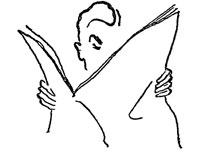The Abraham Lincoln Presidential Library and Museum presents the history of President Abraham Lincoln and the state of Illinois. The non-circulating Abraham Lincoln Presidential Library's mission is the collection and preservation of archival resources related to state history. Holdings include more than 5,000 newspaper titles, 400,000 photographs, 5,000 broadsides, 7,000 audio tapes, 1,000 World War II oral histories, 10,000,000 manuscripts, and 1,500 letters signed by Lincoln. The museum focuses on Lincoln's life, divided between his presidency and the preceding years.
The museum offers traditional and interactive exhibits, full-scale dioramas, a 17-minute film, storytelling, a 15-minute holograph presentation, a children's area, library tours, research library access, a high school summer internship program, and catered box lunches. Appointments are necessary for research in the Manuscripts, Audiovisual, and Lincoln Collections. Advance notice is required for all school groups, box lunches, and for library tours. Wheelchairs are available for use on the premises. Theater presentation scripts are available in French, German, Spanish, and Japanese. The website offers a list of relevant state educational standards, seven teacher resource guides, information on the Horace Mann-Abraham Lincoln Fellowship for educators, and an educator's pass.
